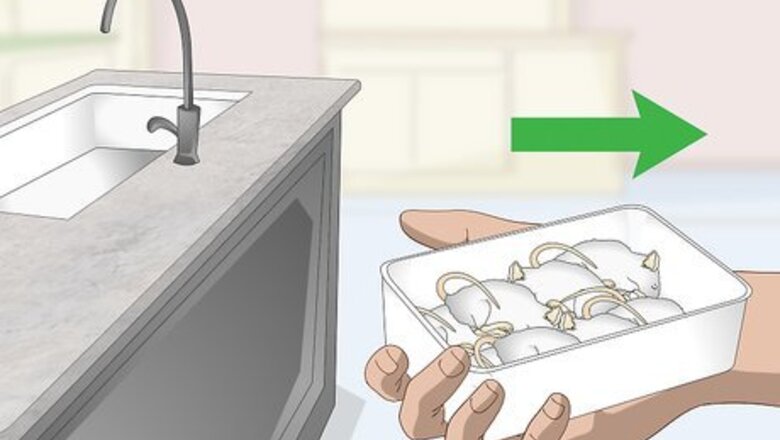
views
- Put frozen rodents in a plastic bag, and place the bag inside a heat-safe bowl; thaw them in the refrigerator and then use hot water to warm them up.
- Lower the rodent into the snake’s tank by its tail, allowing the snake to inspect and then take the rodent to eat.
- If the snake is difficult, either put it in an empty container with the rodent and spray them both with warm water, feed it live rodents, or brain the rodent first.
Thawing the Food
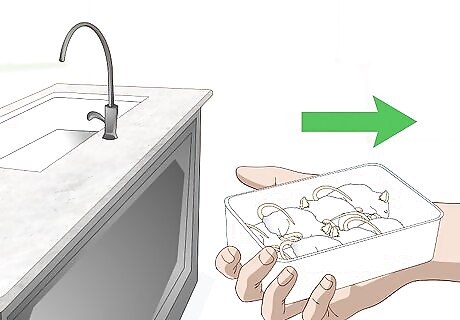
Prepare frozen rodents away from the kitchen when possible. Rodents can bring germs into the kitchen that can make you or people in your home sick. If possible, keep the rodents out of the kitchen, preparing them in a separate area. Many pet stores sell frozen rodents, or you can purchase them online. Don't feed your snake frozen prey that’s more than 6 months old.
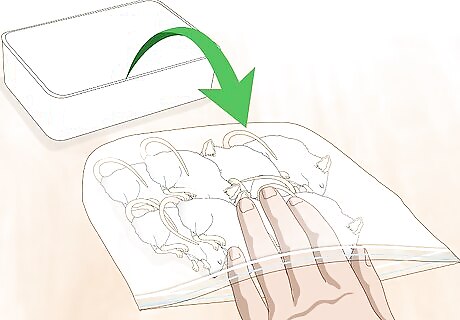
Put the frozen rodents in a plastic bag. Place it into a zip-top bag, as you don't want to thaw it in water without a bag around it. Remove as much air as you can before zipping up the bag. It's actually best to place the mice in bags before you stick them in your freezer, but if you didn't do that, just place it in a clean bag now.
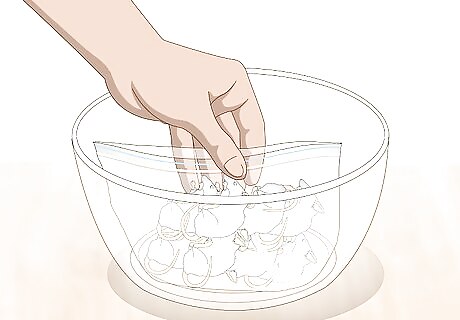
Place the bag in a heat-safe bowl or mug. It doesn't have to be microwave safe, just heat-safe. Make sure the bowl or mug is big enough to hold the rodent and enough water to cover the bag completely. Keep the bowl separate from your food bowls. You don't want to use a bowl for eating that you've thawed a rodent in.
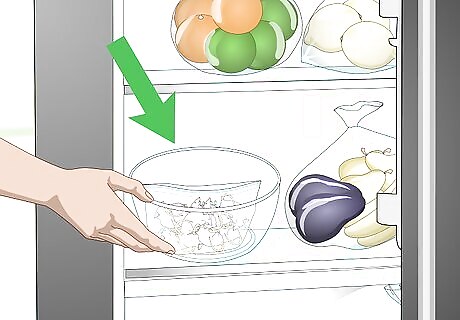
Set the rodent in the refrigerator for easy thawing. Leave the rodent in the refrigerator overnight, and it should be thawed by morning. Because a mouse is so small, it may only take a couple of hours to thaw, but a rat will take 4-5 hours. If it smells really bad when thawed, the rodent is likely not good to give to your snake. Don’t offer feeders that have been in the freezer for more than 6 months to your snake. Just toss them. Rodents have to be thawed, warmed, and then fed to the snake to allow the snake to digest the prey properly and avoid an overgrowth of bad bacteria.
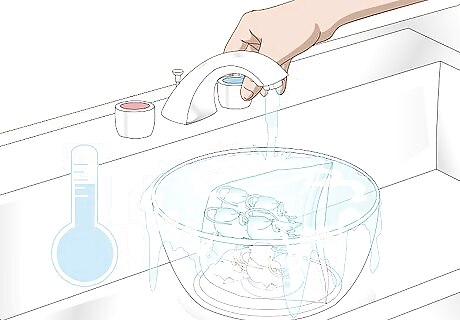
Thaw the rodent in cold water for quicker thawing. Pour cold water over the rodent, which should still be in the bag in the bowl, and set it out on the counter. Leave it for 30 minutes, and then check on it. Some rodents may be thawed in this time. If it's not, replace the water and leave it another 30 minutes. Pour the water off when you're done. Don’t thaw the rodent in the microwave or in hot water, because this can make it spoil.
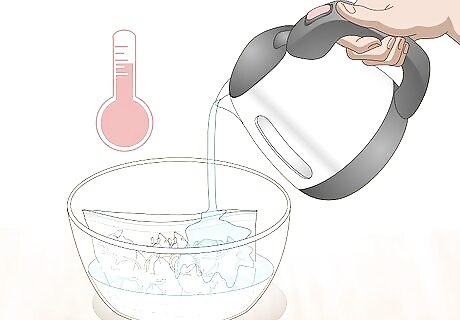
Use hot water to warm up the rodents after they thawed. You don't want to feed your snake a cold rodent, because cold will slow down your snake’s digestion. Pour hot water over the rodent, but don't use boiling water. Let the rodent sit in the water for 10-20 minutes. Check on mice after 10 minutes, but rats will take a bit longer. You may want to use a temperature gun to check if the inside is warm. Once you've thawed and warmed the rodent, feed it the snake as soon as you can because it will quickly start to decay.
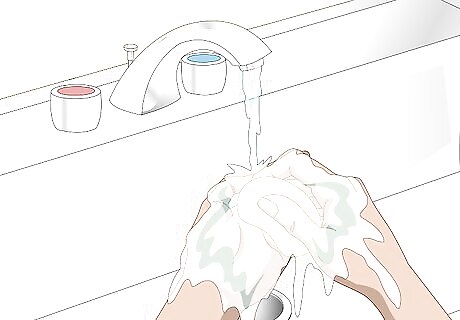
Wash your hands and the area after handling the rodents. Wash your hands with soap and warm water for 30 seconds before rinsing. Wipe down the area with a disinfecting cleaner to make sure you remove as much bacteria as possible.
Feeding the Snake
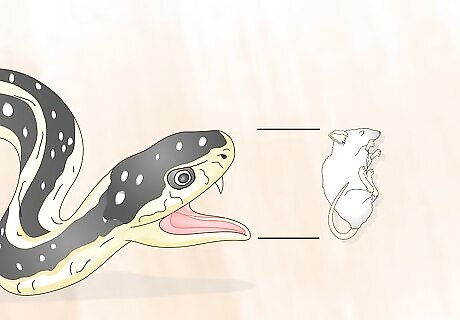
Ensure the rodent is an appropriate size for your snake. The rodent shouldn't be larger than the circumference of the snake. If it is, your snake will likely regurgitate it. It may even cause other issues, such as becoming lodged in the snake. For instance, a baby corn snake eats newborn mice, while an adult corn snake would eat jumbo mice. Rodents are typically categorized by size when you buy them. Making small cuts in the rodent’s skin may help a corn snake digest it.
Feed at a comfortable time for your snake. Try to wait until the snake isn’t shedding and has gone to the bathroom before feeding it, as it's more likely to want to eat. Many snakes are more active at twilight, so you should feed them in the late afternoon. Some snakes are nocturnal and won’t be comfortable eating during the day.
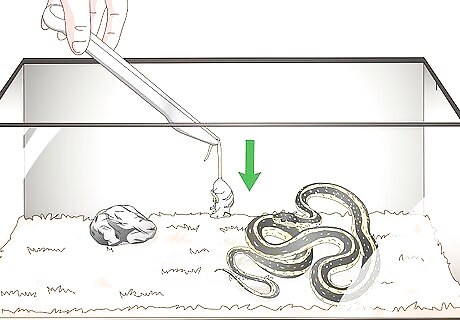
Lower the rodent into the cage by its tail. Use tongs to hold the rodent by its tail. As you lower into the cage, move the head of the mouse towards the head of the snake in range of its tongue. With a garter snake, you will need to move it around a bit, as they're more attracted to movement than other snakes. Always use tongs, as snakes use heat and smell to guide them. They may strike at your hand if you don't! You can also feed your snake in a separate feeding enclosure, so that the snake doesn’t associate you putting your hand in their cage with eating.
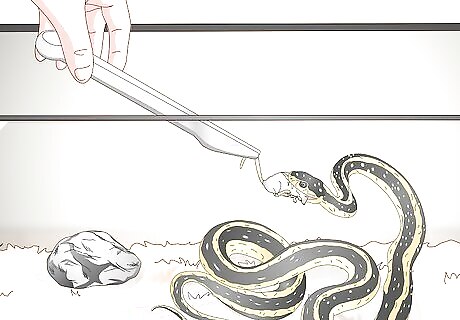
Wait for the snake to inspect and take the rodent. The snake will use its tongue to check out the rodent. Once it does, it will typically strike the rodent and take it from your tongs. Be sure to drop the rodent when it does! Once your snake gets used to the bait, you may be able just to place the rodent in the cage for the snake to take.
Working with Stubborn Snakes
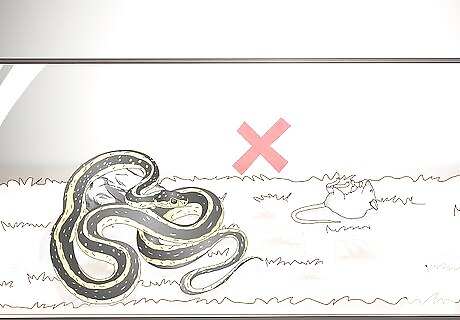
Ensure the snake is healthy and happy. An unhealthy snake won't want to eat. If you suspect your snake is sick, take it to the vet to have it checked out before you try feeding it again. Also, make sure the cage fits the snake's environmental needs. If it doesn't, it may not want to eat. Look for changes in behavior, which can indicate your snake is sick. Lethargy, skin changes, mouth discharge, diarrhea, vomit, swelling, and weight loss can all indicate sickness. If you aren't providing the right temperature gradients for your snake, it won't want to eat.
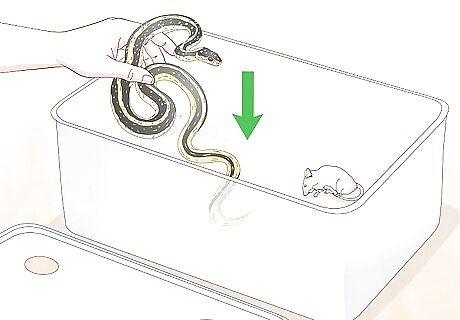
Try putting the snake in an empty container with the rodent. Place the rodent in an empty plastic container with air holes. Move the snake into the container and let it find the rodent. Once the snake has eaten the rodent, move it back into its main cage. Placing the snake and rodent in an empty container removes other distractions and helps the snake focus on the rodent. Some snakes don't like being handled before being fed, so it's really just trial and error to see if that helps.
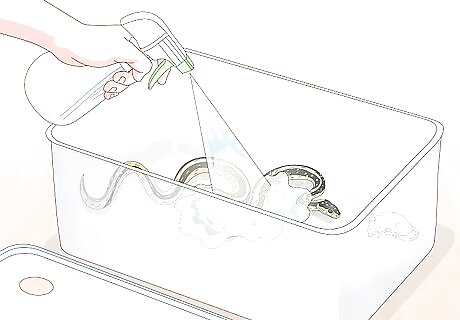
Spray the rodent and snake with warm water to encourage activity. Spray a gentle mist on the snake and rodent. It will encourage the snake to move around. Plus, it will make the rodent smell a little more so the snake will want to come after it.
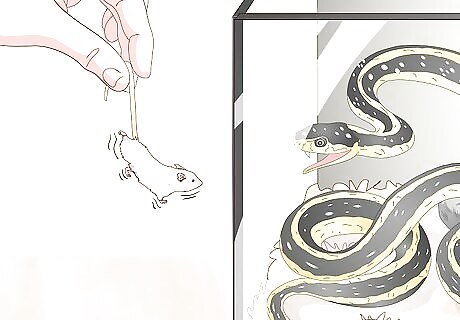
Train your snake by tease-feeding it. Start by feeding it live or just-killed rodents for 12-14 feedings. To train it, wave the rodent in front of the snake outside of the cage. Make a big show of it. Then, open the cage with a snake hook and lower the rodent into the cage with tongs. This works on the snake's feed response. After a while, it will get used to being fed this way, and you can switch over to using pre-killed prey that have been frozen. Make sure to feed the frozen rodents in the same way you did the live ones.
Brain the rodent if your snake is very stubborn. Wear gloves while you do this to protect yourself. Split the head of the rodent open, so that the brain and blood is visible. Then, give this cut-open rodent to your snake, who will think this looks delicious. Braining can be a bit gross, so only do this if you’re not squeamish.
Disguise the prey with a more appealing scent. Start by washing the thawed prey in warm water and drying it. Place it in a sealed container with the thing you want to get the scent of, for example a dead frog or a bird feather. It won’t take long for the smell to transfer. You can scent frozen prey with bedding that smells like other animals. For example, gerbil bedding can be a good choice to scent prey for stubborn ball pythons. Don’t rub animal droppings onto the prey because this can transfer bacteria. Present the scented prey to the snake the same way you normally would.




















Comments
0 comment